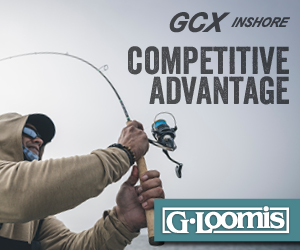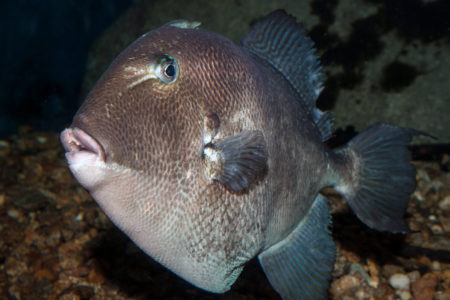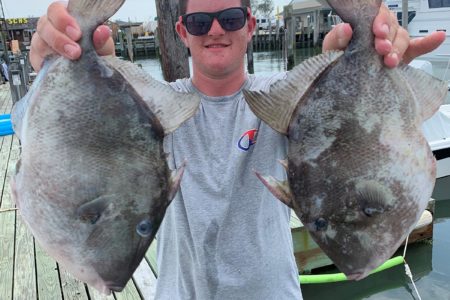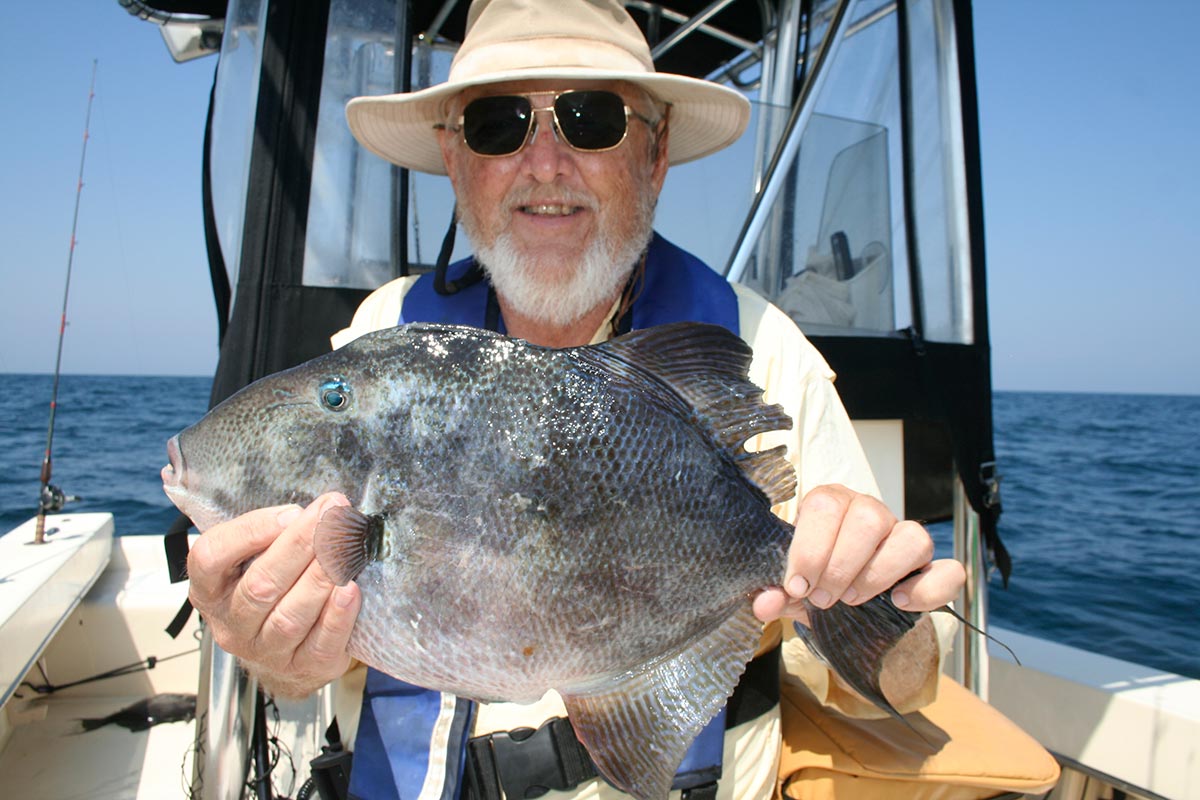
At roughly 782 square miles in area, the Delaware Bay has been a big target area for NJ and DE anglers for generations.
My first memory of bottom fishing Delaware Bay came when I was a very young boy watching my grandfather clean lard cans full of croakers he and his friends caught on a charter boat out of Mispillion Inlet. He worked shift work at the Viscose plant in Marcus Hook and between night shift and day shift he had three days off.
Pop and his five friends would leave after work and drive down to Slaughter Beach, DE to get onboard the boat then fish until afternoon before heading back home.
Once home, the fish had to be cleaned, then the line had to be taken off the reels, soaked in fresh water, wound on to the drying rack before being cranked back on the reels. As I sit in my office writing this article, I can look up on the wall and see both of my grandfather’s rods and reels with that very same line.
Pop was laid off from the Viscose before I was old enough to join him and his friends on one of their fishing trips. When I was 10 or 12, we bought a used Elgin 10-horsepower motor and began fishing from Slaughter Beach by renting a wood boat from a very strong lady who had a boat livery business right on the beach. She would drag the boat across the sand to the water while Pop and I struggled with the motor and our fishing gear.
Once we were underway, if the tide was out, I would have to push the boat with Pop sitting in the bow like Cleopatra on her barge until we had enough water to put the motor down. At that point I would jump in the stern, drop the motor down, go through a very precise routine of exactly where to set the choke, the throttle and utter the exact prayer before pulling the starter cord. If the gods were on our side the motor would cough a few times then start on the second or third pull.
From there it was off to the Coral Beds.
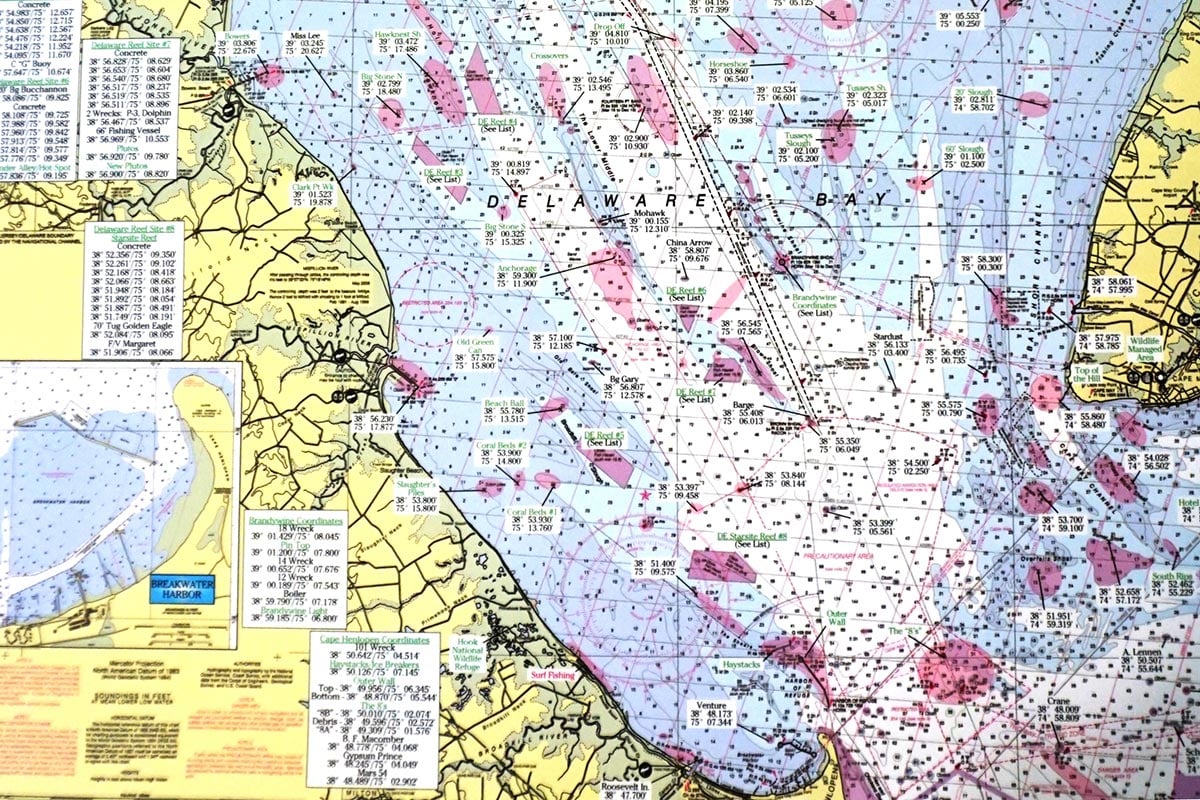
Wonderful Weakfish
The Coral Beds is the name given to a large area of rough bottom where worms had built up casings over a few thousand years and this structure had created an ecosystem that attracted croakers in the 1950s then trout or weakfish in the 1960s. It was also and still is the breeding grounds for black drum every spring. The Coral Beds were only a few miles from the beach so we were always close to shore. However, as a young boy I felt like Christopher Columbus as I ran the boat over the bay.
We had no electronics, not so much as a compass. Really didn’t need anything. We just ran out to the general area and started fishing. If we didn’t catch anything, we moved around until we did. Used landmarks on shore to get our position and keep track of where we started and stopped each drift.
The only bait I remember using was squid. We cut it in strips and used hooks on cat gut leaders and rigs we bought at Sears. By this time coolers had been invented and I think we had one made by Coleman. For the most part we caught croakers, but on one trip during slack water between incoming and outgoing current we each caught big trout. Both were over 30 inches and I believe Pop’s was an inch or two larger.

We fished Delaware Bay like that until I went into the Navy in 1961. When I got out in 1965 the old Elgin was on its last legs and so was Pop. I started fishing with my two brother-in-laws, Bobby Woods and Paul Coffin, until I finally got my own boat. This was era of the fantastic trout fishing in Delaware Bay. By now I was doing fishing reports for The Fisherman and unless you had a 10-pounder, I didn’t bother to put your name in the magazine.
As all good things must come to an end, so too did the trout in Delaware Bay. There has been a glimmer of hope the past 2 years, but it will take several more before we can know if these fish will return.
In the meantime, we can still have fun catching the good number of bottomfish available in the bay. True, few surpass the 1-pound mark and none come close to the size of those long gone trout, but that’s the point, those trout are long gone so stop crying about we don’t have and start having a good time catching what we do have.
Structure Fishing
Last year I had a great time catching spot and kings. My current boat is a 16-foot Starcraft with a 40-horsepower motor so I don’t go very far from the Lewes boat ramp, but I can reach Delaware Reef Site 8, the Outer Wall, the Inner Wall and even the Anchorage when the weather is good.
I learned a long time ago not to run over fish running to where there may be fish. On a typical day I will start fishing at the Ferry Wall, just a short run from Roosevelt Inlet. I work the side of the Wall to the west, not the inside where the Cape May-Lewes Ferry runs. Big as they are, they can creep up on you.
I begin by casting a live minnow to the rocks in case a flounder is waiting in ambush. Since flounder have become scarce in recent years, I don’t spend a lot of time in this pursuit before changing over to a top-bottom rig baited with FishBites. I will use bloodworm, clam and shrimp FishBites and the croakers, trout, spot and kings seem to like all three. At the very end of the Ferry Wall is a deep hole. I will drift from one side to the other and quite often this will be the hot spot of the day especially on the incoming current. In fact, all of Delaware Bay fishes best on the incoming; at least it does for me.
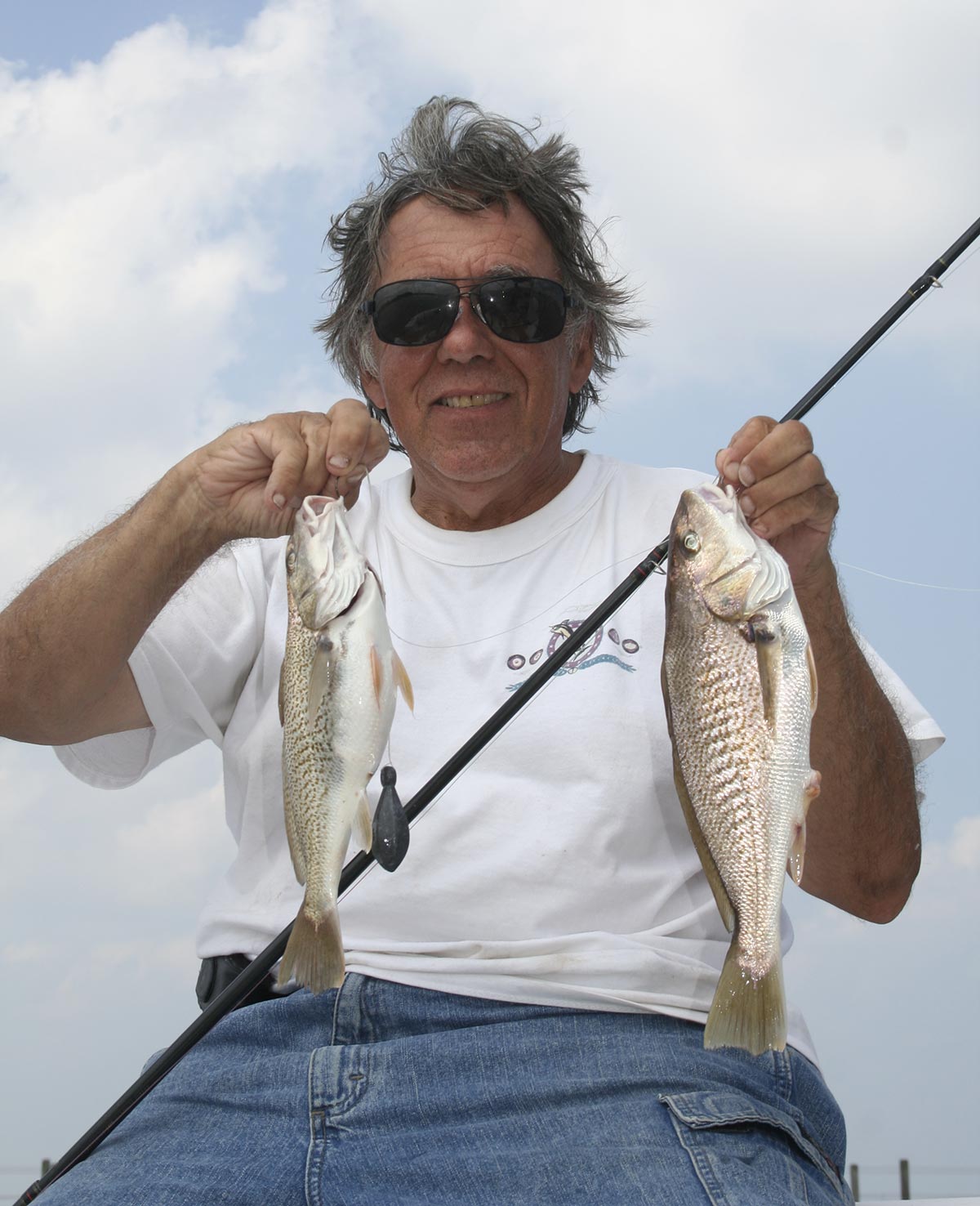
From there it is over to the area between the two fishing piers. This is pretty much open bottom that can be very productive. Or not. When it’s on you will know right away and when it’s not, you can move on to the broken pilings at the end of the long pier.
Kayak anglers do well around these pilings catching flounder by jigging tight to the structure. I have tried to get my tin boat in there will little success. My attempts to cast to the pilings have resulted in lost jigs and no flounder.
Then it’s off to the Inner Wall. I have not had the greatest luck here, but there have been a few good days that keep me coming back. I drift from the Wall back out towards the pier until I reach the Lighthouse. The deep hole here seldom, if ever, produces good results. The ocean side of the Inner Wall has never been good to me either.
The Outer Wall can be very good. I have my best bottom fishing from the rip that develops at the north end on the ocean side on incoming water. I work from there to the Shears to a few of the Haystacks or Ice Breakers before moving to Reef Site 8.
Reef Site Madness
There is a lot of structure at Reef Site 8 and most of it has been there a long time. You really must pay attention to your equipment. Do not put the rod in a holder and expect to get your rig back, let alone catch a fish. Use as light a sinker as possible and maintain contact with the bottom at all times. Braided line will help you feel the first sign of a hard structure in time to raise up the rig and keep it from getting snagged.
Representative LAT/LON numbers below courtesy of Captain Segull’s Charts.
Anchorage 38 59.300 / 75 11.900
Coral Beds #1 38 53.930 / 75 13.760
Coral Beds #2 38 53.900 / 75 14.800
Flounder Alley 38 57.836 / 75 09.125
Inner Wall (bottom) 38 48.870 / 75 05.544
Outer Wall (top) 38 49.956 / 75 06.345
Reef Site 5 38 54.983 / 75 12.657
Reef Site 6 38 58.086 / 75 09.825
Reef Site 7 38 56.828 / 75 08.629
Reef Site 8 38 52.356 / 75 09.350
.
There are so many other locations in Delaware Bay where you can expect to have good bottom fishing. Reef sites 5, 6 and 7 are all reasonably close to Lewes and all hold spot, croaker, kings and trout.
My tackle is pretty light. I use a Shakespeare Ugly Stick USESP662M rated for 6- to 14-pound line. The reel is a matching Shakespeare USE30 filled with 10-pound test Stren. A very simple top-bottom rig made from 20-pound fluorocarbon with a perfection loop on top and either double surgeon’s’ or dropper loops tied to hold the circle hooks. I use a surgeon’s loop on the end to hold the sinker. I use only circle hooks when bait fishing.
I like a short leader so the fish has a chance to run off a bit and hook itself. When fishing for spot, the smaller the hook the better. The other bottomfish have a bigger mouth than you think.
I began my fishing life catching bottomfish then moved to the offshore grounds and looked down on croaker chokers and perch jerkers. Now I am once again back where I began and having a good time.
PHOTO CAPTIONS
USED CHART AS AN OVERLAY IF NEEDED – Chart courtesy of Captain Segull’s.
AUTHOR – The author with a scrappy, fine-tasting triggerfish, the likes of which have been showing up on Delaware Bay reef sites during the summer.
COOLER – The makings of good fish fry, which with a little effort on light tackle is readily available not far from bayshore ports in Delaware and New Jersey.
CROAKER – Mike Pizzolato with a brace of Delaware Bay croaker.
